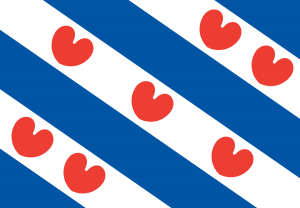Language/Western-frisian/Grammar/Noun-Gender-and-Plurals
Introduction
In Western Frisian, as in many other languages, nouns have gender and can be singular or plural. Noun gender determines the article (definite/indefinite) and adjective forms used to describe the noun. Plurals are formed differently depending on the noun gender and whether the noun is a regular or irregular plural.
It is important to have a good understanding of noun gender and plurals as they are essential for constructing basic sentences and holding a conversation in Western Frisian.
After mastering this lesson, these related pages might interest you: Descriptive Adjectives & Questions.
Noun Gender
In Western Frisian, there are two noun genders: masculine and feminine. Unlike in other languages, there is no neuter gender. A noun's gender is generally indicated by its ending. However, like in many languages, there are also numerous exceptions, and the only way to know the gender of a noun is by memorizing it.
Masculine Nouns
Masculine nouns generally end with the following syllables:
- -er: beker (cup), fisker (fisherman), dokter (doctor) - -el: tafel (table), stoel (chair), spiegel (mirror) - -em: problem (problem), system (system) - -aar: skriuwer (writer), lêzer (reader)
Examples:
| Western Frisian | Pronunciation | English |
|---|---|---|
| beker | BEH-kur | Cup |
| fisker | FIS-keer | Fisherman |
| dokter | DOHK-ter | Doctor |
Feminine Nouns
Feminine nouns generally end with the following syllables:
- -e: tûke (scarf), hûske (house) - -te: stêdte (city), froulju (women) - -ie: tsjerke (church), fabryk (factory) - -d: neilittichheid (laziness), besibbe (related)
Examples:
| Western Frisian | Pronunciation | English |
|---|---|---|
| tûke | TOO-kuh | Scarf |
| stêdte | STAYD-tuh | City |
| fabryk | FAB-rik | Factory |
Noun Plurals
The rules for forming noun plurals in Western Frisian are fairly straightforward, but there are several exceptions that must be memorized.
Regular Plurals
Most Western Frisian nouns form their plurals by adding -en.
Masculine singular nouns ending in -er, -el, -em, and -aar add -s instead of -en. Some masculine nouns also have irregular plurals.
Feminine singular nouns ending in -e, -te, -ie, and -d add -n instead of -en.
Examples:
| Western Frisian | Pronunciation | English |
|---|---|---|
| boer | BOHR | farmer |
Examples of regular plurals:
| Western Frisian Singular | Western Frisian Plural | English |
|---|---|---|
| boer | boeren | Farmers |
| boat | boaten | Boats |
| tûke | tûken | Scarfs |
| frou | frouwen | Women |
Irregular Plurals
Some Western Frisian nouns have irregular plurals, such as:
- Mannelijk and vrouwelijk: Mâl (bruinvis) - Mallen (bruinvissen). Same for mus (muis).
- Only vrouwelijk: Mem (moeder) - Memmen (moeders).
- Only mannelijk: Bok (bok) - Bokken (bokken).
Examples:
| Western Frisian Singular | Western Frisian Plural | English |
|---|---|---|
| bok | bokken | Bucks |
| mem | memmen | Mothers |
| mâl | mallen | Porpoises |
Definite and Indefinite Articles
In Western Frisian, the definite and indefinite articles (the and a/an) are used before nouns. The form of the article depends on the noun gender and whether the noun is singular or plural.
Definite Articles
The definite article in Western Frisian is "de".
In the plural, the definite article is the same for both feminine and masculine nouns: "de".
Examples:
| Western Frisian | Pronunciation | English |
|---|---|---|
| de beam | (pronounced like "duh baym") | The tree |
| de stêden | (pronounced like "duh stay-den") | The cities |
Indefinite Articles
The indefinite article in Western Frisian is "ien".
In the plural, the indefinite article is the same for both masculine and feminine nouns.
Examples:
| Western Frisian | Pronunciation | English |
|---|---|---|
| in beam | IN baym | A tree |
| in stêd | IN stayd | A city |
Conclusion
In this lesson, you have learned about the gender of nouns in Western Frisian and how to form plurals, including irregular plurals. You have also learned about definite and indefinite articles, and how to use them with different noun genders and in plural form.
It is important to practice and memorize the different noun genders and plurals, as well as the articles that precede them. This will help you construct basic sentences and communicate effectively in Western Frisian.
References
- M. C. van den Toorn; W. van der Meer; Jan Pieter Snapper (1997). Geschiedenis van de Friese literatuur. Amsterdam: Amsterdam University Press. ISBN 90-5356-166-7.
Excellent job on conquering this lesson! Consider delving into these related pages: Conditional Mood & Irregular Verbs.

